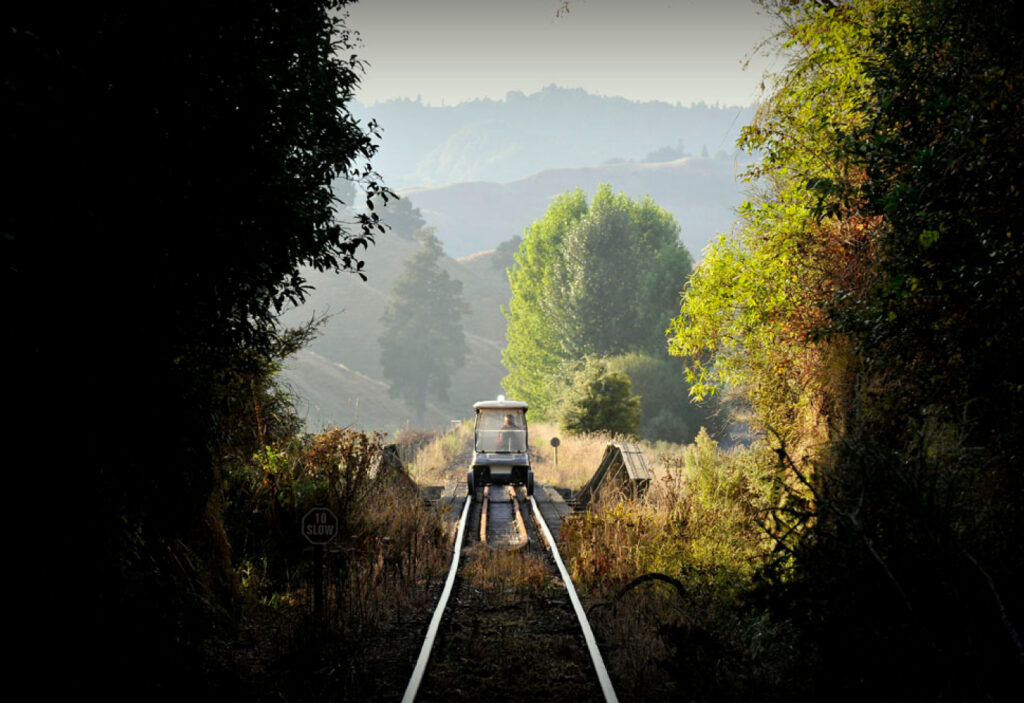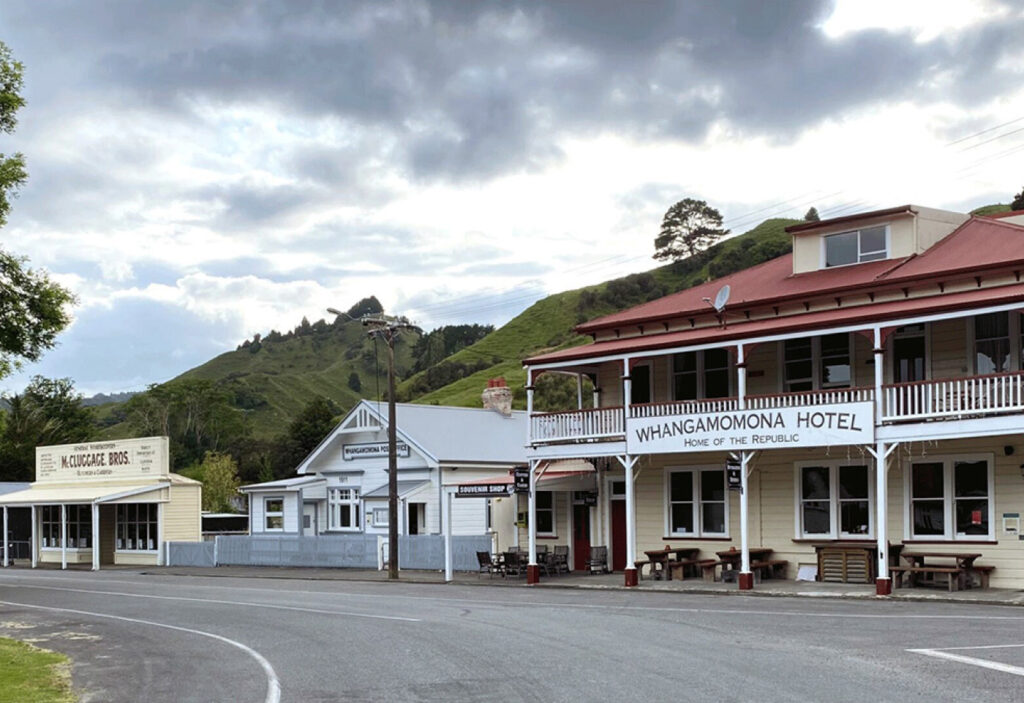The Whanganui River (awa) winds its way through the heart of the Whanganui National Park and one of the largest tracts of lowland forest in the North Island, through deep gorges masked in native bush and banks encased with ferns, caves and waterfalls. The combination of this mighty river, vibrant forest and rich Māori history have drawn visitors from near and far since a riverboat service was established in 1891.
In 2017 the Whanganui River was legally recognised as Te Awa Tupua, a living and indivisible whole from the mountains to the sea. Now this world renowned journey between Taumarunui and Pipiriki is considered one of New Zealand’s Great Walks – even though it has to be negotiated on the water.
Bridge to Nowhere
In 1917 the New Zealand government opened up land around the Mangapurua and Kaiwhakauka valleys for settlement by servicemen returning from World War I. Virgin forest was cleared and farms were established. From the outset, life was hard in the isolated valleys but with a mix of hope and grit, the settlers persevered.
In 1919 a wooden swing bridge was built over the Mangapurua Stream to connect settlements with riverboats that brought supplies up the river. Initially, the valley prospered but access remained difficult and following persistent requests, the government agreed to erect a bridge across the Mangapurua Stream.

An early settlers plough remains as a memorial to the families who tried to break in the land.
As this bridge decayed, plans were drawn up for a new concrete bridge. The bridge was designed by the Public Works Department in October 1933 and construction began in January 1935. Concrete was mixed by hand and the steel was bent and cut on-site. Economic hardship and isolation resulted in farmers abandoning their farms. By 1942 only three families remained in the valley and that year they were forced to leave by the government who closed this ambitious but ill-fated settlement. Farms were left to be reclaimed by the bush and the Mangapurua Bridge became an enduring symbol of the Forgotten World.
Travelling by Jet boat is the easiest way to access the famous ‘Bridge to Nowhere‘. The Forgotten World Adventures’ selection of premium and exclusive tour offerings will get you there. Take a journey into this enchanting forgotten world, get lost in the history and connect with the treasure that is Te Awa Tupua.
Want to visit the Bridge to Nowhere? We can get you there by booking one of the following tours:
Bridge to Nowhere Escape
The Expedition
The Epic
Kiwis Saving Kiwi & Whio




















